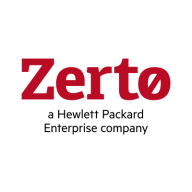


Zerto and Nutanix Move compete in the data migration and protection category. Based on the comparisons, Zerto seems to have the upper hand with its comprehensive disaster recovery (DR) capabilities and failover process efficiency.
Features: Zerto offers near-zero RPOs, making it a top choice for DR solutions with impressive failover and instant recovery capabilities. Its seamless integration with various environments allows migration between data centers efficiently. Nutanix Move is distinguished by its simplicity and reliability in migrating VMs to Nutanix infrastructure, supporting live migrations with minimal downtime and no network slowdown.
Room for Improvement: Zerto could enhance alert management, licensing flexibility, and integration with diverse infrastructures. Users also desire advanced backup features and API support. Nutanix Move should consider enabling bidirectional migrations, offering more configuration flexibility, and implementing retry mechanisms for failed migrations to enhance user experience.
Ease of Deployment and Customer Service: Zerto supports deployment across on-premises, private, public, and hybrid clouds, making it versatile, although cloud configurations can be complex. Its customer service is responsive but was criticized post-acquisition. Nutanix Move focuses on simplicity in transitioning infrastructures to Nutanix systems and receives positive feedback for effortless deployment and support.
Pricing and ROI: Zerto is high-priced, justifiable through its rapid recovery capabilities exhibiting strong ROI. Its per-VM pricing highlights its premium position. Nutanix Move is cost-effective, bundled within the Nutanix suite without extra licensing costs, adding appeal for existing Nutanix users and allowing significant cost savings.



IBM Turbonomic offers automation, planning, and right-sizing recommendations to streamline resource management, improve efficiencies, and optimize costs across virtualized environments and cloud platforms.
IBM Turbonomic is valued for its capability to optimize resource allocation and monitor virtual environments efficiently. It facilitates automated decision-making in VM sizing, load balancing, and cost optimization for both on-premises and cloud deployments. Users can leverage insights for workload placement, ensure peak performance assurance, and effectively right-size across VMware and Azure. The ongoing transition to HTML5 aims to improve visual and navigational ease, while expanded reporting features are anticipated. Opportunities for improved training, documentation, and integrations enhance platform usability and functionality.
What Are the Key Features?In finance, IBM Turbonomic aids in maintaining platform efficiency during market fluctuations. Healthcare organizations leverage its capability for resource optimization during high-demand periods to enhance patient care support. Retailers use it for planning in peak seasons, ensuring resources align with fluctuating demand to maintain performance continuity.
Nutanix Move simplifies this process with infrastructure-level bulk VM migrations, removing the friction associated with onboarding new infrastructure, and enabling businesses to quickly leverage the full potential of Nutanix Enterprise Cloud, with near-zero VM or application service outage during migrations.
Zerto is used for disaster recovery, business continuity, data migration, and ransomware recovery, providing continuous data protection and near real-time replication. Valued for ease of use, efficient failover processes, and versatile integration, it enhances organizational efficiency, reduces errors, and boosts productivity.
We monitor all Cloud Migration reviews to prevent fraudulent reviews and keep review quality high. We do not post reviews by company employees or direct competitors. We validate each review for authenticity via cross-reference with LinkedIn, and personal follow-up with the reviewer when necessary.